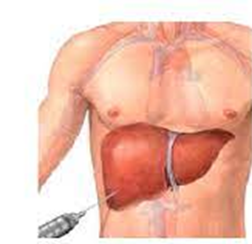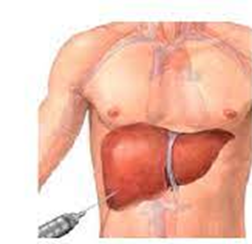PN ADULT MEDICAL SURGICAL 2023
PN ADULT MEDICAL SURGICAL 2023 ( 78 Questions)
A nurse is reviewing the laboratory data of a client who is scheduled for a liver biopsy. Which of the following values should the nurse report to the provider?
Bilirubin 1.0 mg/dL (0.3 to 1.0 mg/dL) is incorrect. Bilirubin levels within the normal range typically indicate normal liver function. The value of 1.0 mg/dL falls within the expected range, so it doesn't raise immediate concerns regarding the need for a liver biopsy.
Aspartate aminotransferase 34 units/L (0 to 34 units/L) is incorrect. Aspartate aminotransferase (AST) is an enzyme found in various tissues, including the liver, heart, muscles, and red blood cells. While a value of 34 units/L is at the upper limit of the normal range, it's still within the expected range and doesn't typically prompt immediate concern for the need for a biopsy.
Ammonia 55 mcg/dL (10 to 80 mcg/dL ) is incorrect. Ammonia levels can rise in cases of liver dysfunction. The level of 55 mcg/dL falls within the reference range, indicating normal or near-normal ammonia levels, which doesn't usually necessitate an urgent liver biopsy.
Platelets 60,000/mm3 (150,000 to 400,000/mm3) is correct. Platelets are crucial for blood clotting. A significantly low platelet count, such as 60,000/mm3, termed thrombocytopenia, can indicate compromised clotting ability, which might pose a risk of bleeding during or after a liver biopsy. In the context of a liver biopsy, a low platelet count warrants attention and consideration before proceeding with the procedure to prevent excessive bleeding or complications.

Choice A Reason:
Bilirubin 1.0 mg/dL (0.3 to 1.0 mg/dL) is incorrect. Bilirubin levels within the normal range typically indicate normal liver function. The value of 1.0 mg/dL falls within the expected range, so it doesn't raise immediate concerns regarding the need for a liver biopsy.
Choice B Reason:
Aspartate aminotransferase 34 units/L (0 to 34 units/L) is incorrect. Aspartate aminotransferase (AST) is an enzyme found in various tissues, including the liver, heart, muscles, and red blood cells. While a value of 34 units/L is at the upper limit of the normal range, it's still within the expected range and doesn't typically prompt immediate concern for the need for a biopsy.
Choice C Reason:
Ammonia 55 mcg/dL (10 to 80 mcg/dL ) is incorrect. Ammonia levels can rise in cases of liver dysfunction. The level of 55 mcg/dL falls within the reference range, indicating normal or near-normal ammonia levels, which doesn't usually necessitate an urgent liver biopsy.
Choice D Reason:
Platelets 60,000/mm3 (150,000 to 400,000/mm3) is correct. Platelets are crucial for blood clotting. A significantly low platelet count, such as 60,000/mm3, termed thrombocytopenia, can indicate compromised clotting ability, which might pose a risk of bleeding during or after a liver biopsy. In the context of a liver biopsy, a low platelet count warrants attention and consideration before proceeding with the procedure to prevent excessive bleeding or complications.

